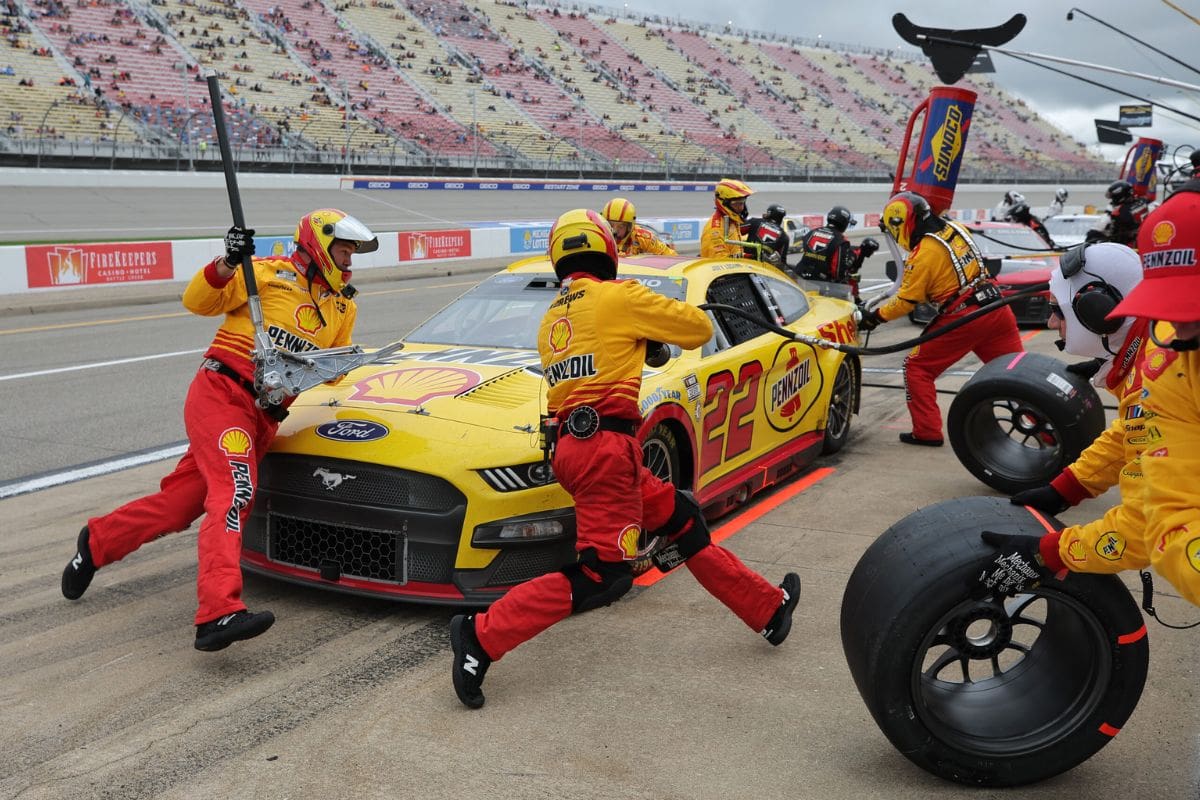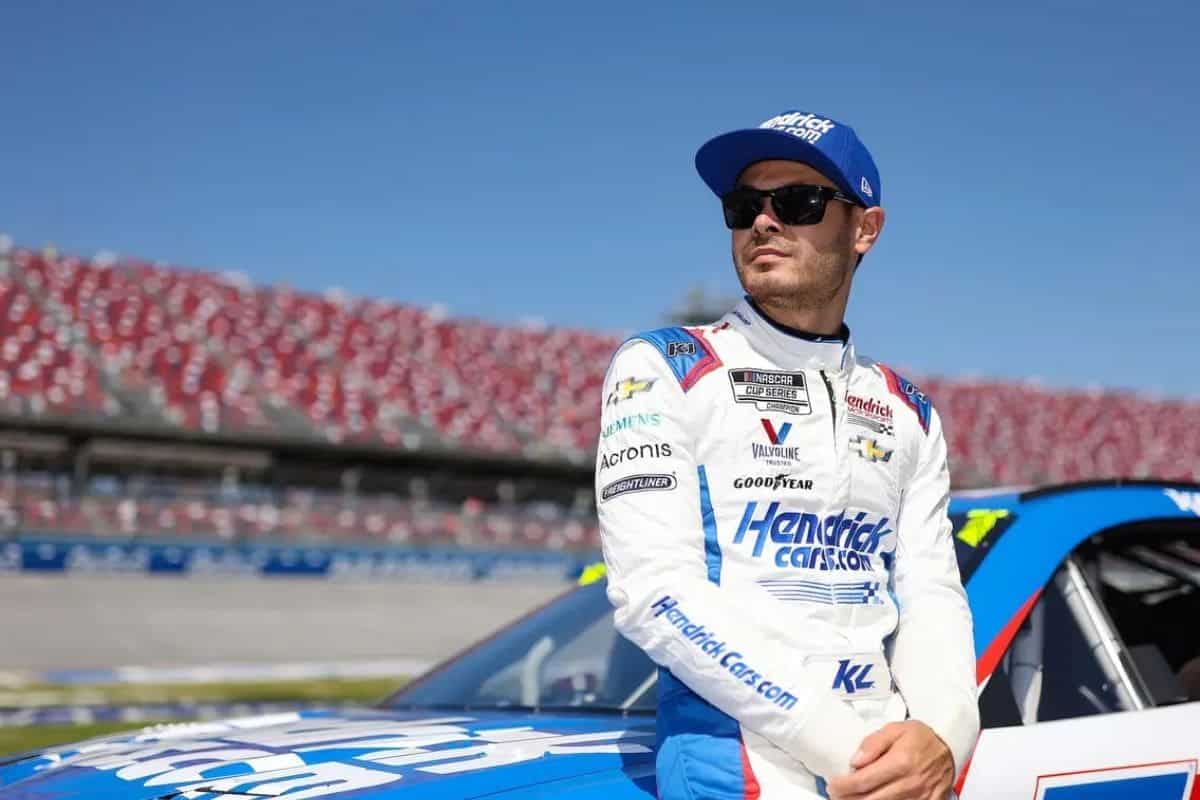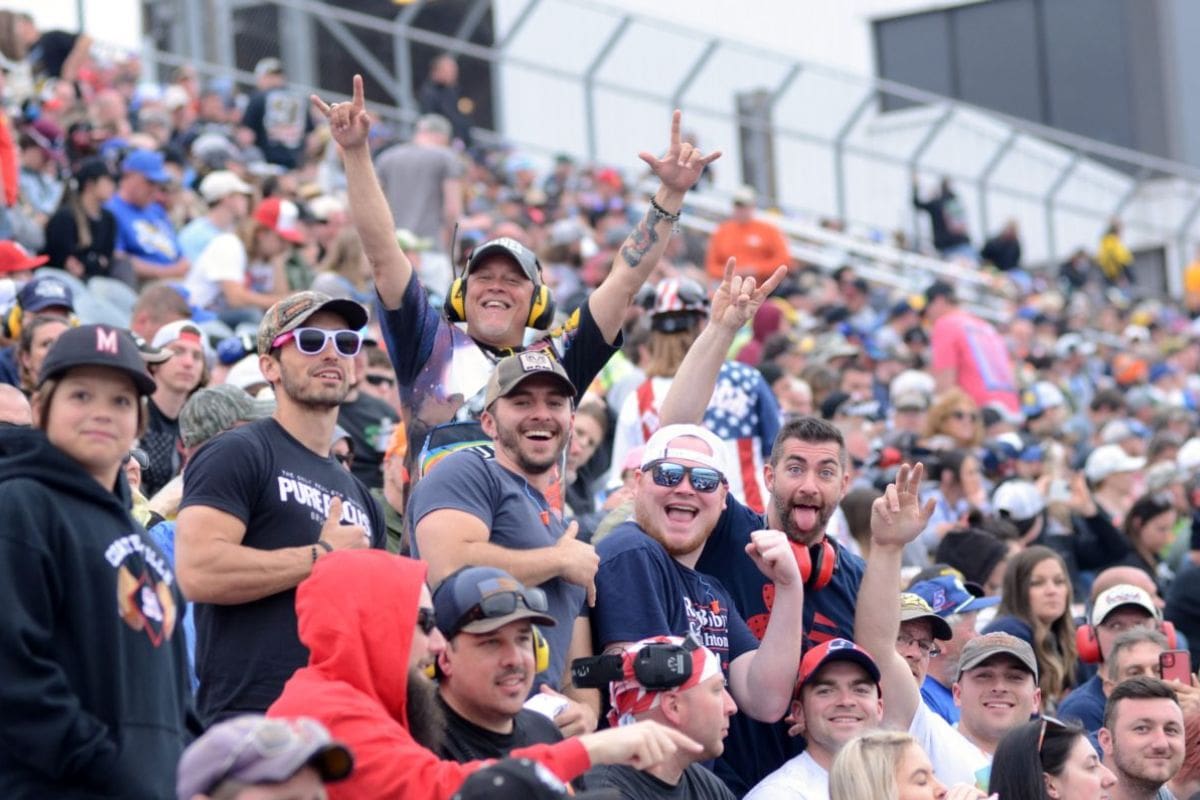NASCAR’s Wet Tire Drama: NASCAR’s use of wet-weather tires during the race at New Hampshire Motor Speedway led to substantial delays and heightened emotions. Mandated for the final 77 laps due to adverse weather conditions, the tires allowed for non-competitive pit stops but did not notably shift race dynamics. Elton Sawyer defended the decision, highlighting safety and continuous racing. However, Kyle Larson‘s radio outburst and Bubba Wallace’s humorous social media commentary emphasized the high-pressure environment and fan engagement. Mixed reactions from fans captured NASCAR’s struggle to balance integrity and unpredictability. Explore the intricate details and emotional highs under NASCAR’s wet tire dilemma.
Key Highlights
- NASCAR’s wet-weather tires sparked mixed reactions, with some fans frustrated by delays and altered race dynamics.
- Kyle Larson’s on-track incident with Denny Hamlin highlighted high-stress and emotional pressures in wet-weather racing.
- Bubba Wallace’s humorous social media engagement offered levity and connected with fans during the tense situation.
- Safety concerns and lack of lighting at NHMS were factors in fan apprehensions about the race.
- Wet-weather tire strategy showed NASCAR’s adaptation to climate challenges and commitment to maintaining race continuity.
NASCAR’s Wet-Weather Tire Strategy at NHMS
NASCAR’s decision to mandate the use of wet-weather tires during the rain-interrupted race at New Hampshire Motor Speedway sparked considerable discussion about the effectiveness and timing of their wet-weather tire strategy. As the race progressed into its final stage, inclement weather led to a nearly two-hour and 15-minute delay, prompting NASCAR officials to take decisive action.
The directive to switch to wet-weather tires was implemented for the final 77 competitive laps, a move that was met with mixed reactions from fans and teams alike. The tactical decision to employ wet-weather tires was meant to guarantee driver safety and uphold competitive integrity under adverse conditions. Twice under caution, NASCAR allowed teams to perform non-competitive pit stops to equip new sets of wet tires, demonstrating a proactive approach to managing the challenging track conditions.
Despite these adjustments, NASCAR assessed that the track never dried sufficiently to warrant a return to slick tires, thus maintaining the mandate for wet-weather tires throughout the remaining laps. The controversy stems from the perception that the introduction of wet-weather tires did not notably alter the competitive dynamics of the race. Many fans questioned the utility of the tires, given that the race was still interrupted and the track conditions remained precarious.
However, from NASCAR’s perspective, the strategy was deemed a success regarding safety and procedural adherence. This cautious approach highlights NASCAR’s commitment to adapting to unpredictable weather patterns while aiming to maintain the continuity and excitement of the race. The wet-weather tire strategy at NHMS reflects a detailed understanding of balancing safety with competitive racing.
Elton Sawyer’s Defense of Wet-Weather Racing
How did Elton Sawyer, NASCAR’s Vice President of Officiating and Technical Inspection, justify the use of wet-weather tires during the rain-affected race at New Hampshire Motor Speedway? Sawyer pointed to the strategic vision and rigorous development process that led to their implementation. He highlighted that the purpose was to guarantee continuous and exciting racing action, even under adverse weather conditions.
“If you go back and look at the reason we came up with this and we started working through it with our teams and the folks at the R&D Center, it was to do exactly what we did yesterday and what we did today with the Cup race…So yes, very successful.” – elton sawyer
Sawyer also credited Goodyear and NASCAR Chairman Jim France for their roles in bringing wet-weather tires to fruition. ‘Kudos to Goodyear. This was Jim France’s vision of what wet weather tires could do,’ he remarked, acknowledging the collaborative efforts that contributed to the successful execution of the strategy.
“Kudos to Goodyear. This was (NASCAR Chairman) Jim France’s vision of what wet weather tires could do. We ran 301-plus laps today. So, with the overtime, our fans got the whole ticket and they got to see some great exciting racing.” – elton sawyer
The race saw Christopher Bell prevail despite challenging conditions, marked by rain, darkness, and multiple cautions. The last 80 laps, in particular, saw drivers switching to wet tires, resulting in numerous spin-outs and wrecks, further highlighting the tires’ critical role in maintaining the race’s continuity.
Sawyer’s defense was anchored in the belief that the fans received full value for their experience. ‘We ran 301-plus laps today. So, with the overtime, our fans got the whole ticket and they got to see some great exciting racing,’ he asserted, reinforcing the idea that the initiative met its objective of delivering a complete and thrilling race, despite the weather-induced complexities.
Kyle Larson’s Radio Outburst
Amidst the drama and strategic decisions surrounding wet-weather tires, another intense moment unfolded during the final stage of the USA TODAY 301 at New Hampshire Motor Speedway when Kyle Larson’s frustration boiled over on the team radio. The incident occurred just before the red flag when Denny Hamlin and Larson made contact on the track. This contact seemed to be the catalyst for Larson’s ensuing outburst.
The tension escalated when Larson’s spotter, Tyler Monn, offered his perspective on the incident. Monn remarked, ‘He (Denny Hamlin) runs you like that every time, you know why because you let it happen.’ This comment, intended to provide critical feedback, struck a nerve with Larson. The driver’s frustration reached a boiling point, leading him to respond with an expletive-laden retort, ‘Shut the f*** up.’ What followed was an uncomfortable silence on the team radio, highlighting the gravity of the exchange.
Larson’s outburst highlights the high-stress environment of NASCAR racing, particularly under challenging conditions such as those presented by wet-weather tires. The interaction between driver and spotter is vital, relying heavily on trust and clear communication. In this instance, the strain of competition and the need to perform seemed to strain that vital partnership temporarily.
Bubba Wallace’s Social Media Banter
Bubba Wallace’s recent engagement on social media provided a comedic reprieve for fans amidst the heated debates over the use of wet-weather tires at New Hampshire Motor Speedway. As NASCAR fans vociferously criticized the decision-making process regarding the wet tires, Wallace seized the moment to infuse some humor into the conversation. Using the platform X.
Wallace’s tweet featured a video clip of Denny Hamlin and Kyle Larson, captioned with: “Everyone complaining about rain tires” followed by “NASCAR.” This playful post cleverly implied that NASCAR’s reaction to the relentless fan outcry would mirror Kyle Larson’s reaction to his team spotter during the race. The video, widely recognized within the racing community, added a layer of context that resonated with fans familiar with the drivers’ interactions.
“Everyone complaining about rain tires” – wallace
*Everyone complaining about rain tires*
NASCAR: pic.twitter.com/BFGbJfMA1k
— Bubba Wallace (@BubbaWallace) June 23, 2024
This lighthearted banter was particularly well-received, as it provided a moment of levity during an otherwise tense period. Wallace’s ability to engage with fans in this manner demonstrates not only his understanding of the sport’s dynamics but also his adeptness at using social media to bridge the gap between drivers and their audience.
In an environment where emotions run high, Wallace’s approach served as a reminder of the communal spirit and the shared passion that underpin the NASCAR experience. His tweet did more than entertain; it highlighted the unique ways in which drivers can connect with their fans, offering a peek into their personalities beyond the track.
Fan Reactions and Race Outcome
Fan reactions to the race outcome at New Hampshire Motor Speedway were a blend of frustration and amusement, as the delayed event grappled with severe weather conditions throughout the weekend. The persistent rain led to a rare decision by NASCAR to employ wet-weather tires, a move typically avoided on oval tracks due to the absence of wipers, flaps, and proper visibility.
New Hampshire Motor Speedway’s lack of lighting further complicated the situation, intensifying fans’ apprehensions about safety and race continuity. Despite the weather-induced setbacks, fans found comfort in the humor woven into the situation by Bubba Wallace. His tweet, shared during the delay, resonated with many, providing a moment of relief amid the exasperation.
“LMFAOOOOOOOOOOO BUBBA”
“The rain saved us for sure. We were terrible in the dry,”
“😆😆😆 I didn’t know you were hilarious!!!” – fans reaction
This interaction on social media highlighted the crucial role of driver-fan engagement, especially during unpredictable events. Qualifying sessions on Saturday were canceled, adding to the weekend’s disruptions. However, the eventual decision to proceed with wet-weather tires demonstrated NASCAR’s commitment to adapting to adverse conditions while prioritizing driver safety.
While some expressed dissatisfaction with the delays and the altered race dynamics, others appreciated the novelty and the efforts to maintain the race’s integrity.
“Wish they would just do away with rain tires everybody always bi***ing about it”.
“Wish they would just do away with rain tires everybody always bi***ing about it”. – fans reaction
News in Brief: NASCAR’s Wet Tire Drama
The implementation of NASCAR’s wet-weather tire strategy at New Hampshire Motor Speedway sparked significant controversy, highlighted by Elton Sawyer’s defense of the approach and Kyle Larson’s notable radio outburst.
Bubba Wallace’s social media interactions further intensified the discourse, while fan reactions varied widely.
Despite these contentious elements, the race proceeded, culminating in a finish that emphasized the complexities and ongoing debates surrounding wet-weather racing in NASCAR.
Our Reader’s Queries
Q. Why doesn’t NASCAR use wet tires?
A. The straightforward answer is that NASCAR Cup, Xfinity, and Truck teams run on slick tires, which lack tread. These tires provide no grip in wet conditions. A prime example is the August 2022 Cup race at Daytona. As the field entered Turn 1, unaware of the rain, cars lost traction and crashed.
Q. When did NASCAR start using wet tires?
A. After testing it on road courses, NASCAR introduced the wet weather package to short tracks starting in 2023. Its first use in a Cup Series points race will be at Richmond in 2024. While tires are often the focus, the wet weather package encompasses much more than that.
ALSO READ: Revolutionary Tire Changes Set to Transform NASCAR Racing



